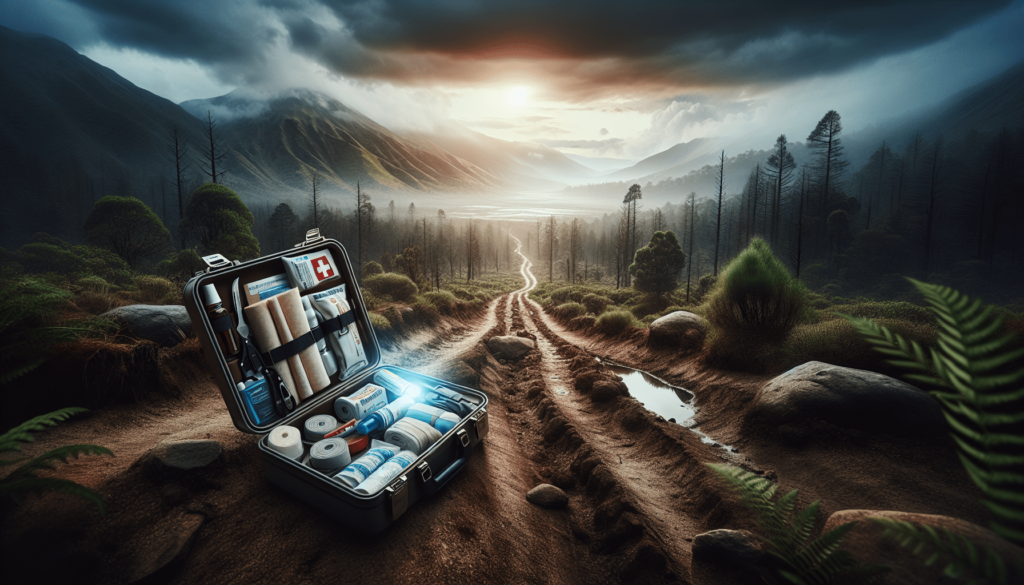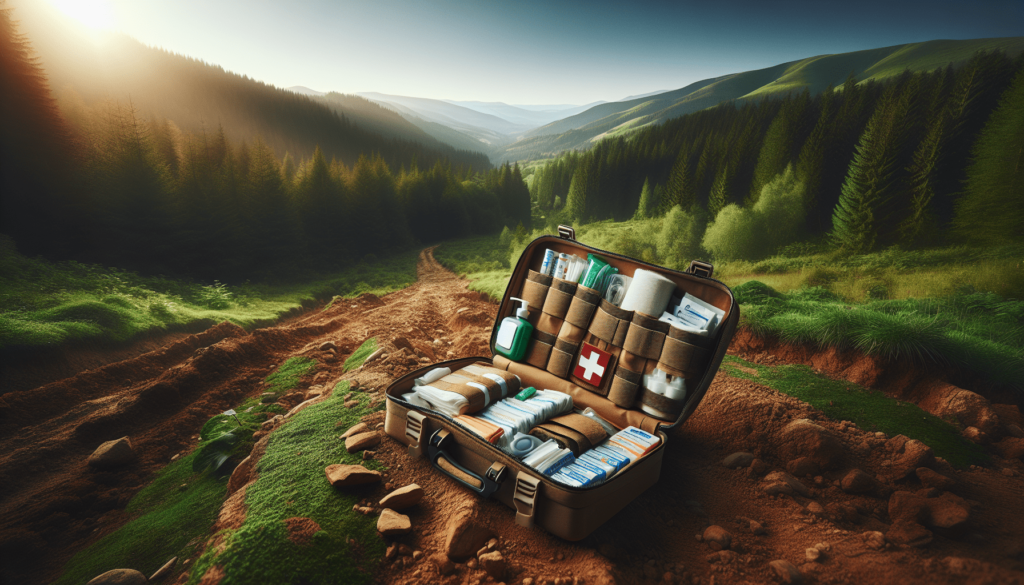Have you ever found yourself in a situation where a medical emergency struck while you were far from the comforts of modern health facilities? It’s a scenario no one wants to face, but if you’re into overlanding or spending time in remote locations, it’s crucial to be prepared. This guide will help you understand how to handle medical emergencies in isolated areas, ensuring that you can respond effectively when every second counts.
Understanding Medical Emergencies
When we talk about medical emergencies, it can cover a broad range of situations. You might face anything from cuts and scrapes to more severe issues like fractures or heart problems. Knowing how to categorize these emergencies can help you prioritize your response.
Common Types of Medical Emergencies
- Minor Injuries: These include cuts, bruises, or sprains. They might not be life-threatening, but they can hinder your overlanding experience if not treated.
- Moderate Injuries: These could involve potential fractures, serious lacerations, or infections that require timely medical attention.
- Severe Emergencies: Conditions like heart attacks, strokes, severe allergic reactions, or significant trauma fall into this category. These situations necessitate immediate action.
Recognizing these types can help you assess your response strategy swiftly.
Preparing for Medical Emergencies
One of the best ways to handle emergencies is through preparation. By equipping yourself with the right knowledge and tools, you can significantly increase your chances of effectively managing a situation.
Essential Supplies for Your First Aid Kit
Having a well-stocked first aid kit is non-negotiable. Ensure you include the following items:
| Item | Purpose |
|---|---|
| Adhesive Bandages | For smaller cuts and scrapes |
| Sterile Gauze Pads | For larger wounds and bleeding |
| Antiseptic Wipes | To clean wounds |
| Medical Tape | To secure bandages or dressings |
| Pain Relievers | Over-the-counter medication for pain |
| Elastic Bandage | For sprains or strains |
| Tweezers | To remove splinters or foreign objects |
| Scissors | For cutting tape, gauze, or clothing |
| Emergency Blanket | To keep warm in case of shock or injury |
| CPR Face Shield | For performing CPR if someone is in respiratory arrest |
Regularly check your kit to ensure all items are in good condition and not expired.
Building Your Knowledge Base
Taking a first aid and CPR course is immensely beneficial. It equips you with practical skills to handle various medical emergencies.
- Basic Life Support (BLS): This course teaches you how to deal with choking, cardiac arrests, and other critical situations.
- Wilderness First Aid (WFA): Focused specifically on emergencies in remote areas, this course covers prolonged care strategies when immediate help isn’t available.
- First Aid for Specific Conditions: If you have underlying health issues or allergies, understanding your risks and how to treat them can be a life-saver.
Creating a Communication Plan
In remote areas, cell service might be patchy or non-existent. Establishing a communication plan before your journey will ensure you have backup methods to reach emergency services if needed.
- Satellite Phones: These devices can be crucial when standard mobile networks fail.
- Two-Way Radios: Perfect for communicating with fellow adventurers.
- Emergency Beacons: Devices like PLBs (Personal Locator Beacons) can alert authorities to your location in emergencies.

Responding to a Medical Emergency
When you find yourself in the thick of a medical emergency, every moment counts. Acting swiftly and efficiently can make a significant difference in outcomes.
Assess the Situation
Your first step is to assess the situation. Ask yourself:
- What exactly happened?
- Are there any visible injuries?
- Is the person conscious and responsive?
This initial evaluation will guide your next steps.
Providing Initial Care
- Stay Calm: Your calmness can reassure the injured person and help you think clearly.
- Call for Help: If you’re near others, notify them and ask for assistance.
- Perform First Aid: Based on the type of injury, begin administering first aid promptly.
Addressing Various Injuries
| Injury Type | First Response |
|---|---|
| Cuts and Scrapes | Clean, apply antiseptic, and cover with a bandage |
| Sprains | Rest, ice, compress, and elevate (RICE method) |
| Fractures | Immobilize the area and get medical help |
| Allergic Reactions | Administer an epinephrine auto-injector if prescribed, while monitoring symptoms |
| Heart Attack Symptoms | Keep the person calm, have them sit, and seek immediate help |
Knowing how to respond based on the type of injury can help streamline your first aid efforts.
When to Evacuate
In some cases, despite your best efforts, the situation might warrant evacuation. Recognizing when to call for professional medical assistance is vital. Some signs include:
- Unconsciousness or altered mental status
- Severe difficulty in breathing
- Intense chest pain or pressure
- Severe uncontrolled bleeding
Trust your instincts; when in doubt, prioritize safety and seek professional help.
Learning from Experience
Handling medical emergencies in remote locations not only relies on initial preparation but also learning from your experiences.
Debrief After an Emergency
Once the emergency has passed, take time to reflect. Discuss what worked well and what could be improved. Here are some questions to consider:
- Did you have all the necessary supplies?
- How effectively did you assess the situation?
- What could you have done differently?
This self-assessment can significantly aid in improving your response for future trips.
Continuous Education
The world of first aid and emergency response is always evolving. Stay updated on the latest techniques and equipment by:
- Attending refresher courses
- Following reputable first aid organizations online
- Reading books or articles on wilderness medicine
Always be proactive in your learning; it can make a world of difference when it truly matters.

Staying Safe in the Great Outdoors
While you can prepare for potential emergencies, preventing them from happening in the first place is an essential aspect of safe overlanding.
Planning Your Route
Thoroughly plan your route before heading out. Familiarize yourself with the area, identifying the nearest medical facilities and emergency services available along the way.
Knowing the Terrain
Every remote location presents unique challenges:
- Weather Considerations: Understanding the weather conditions is critical. Harsh weather can worsen accidents or increase health risks. Always check the forecast.
- Wildlife Awareness: Knowing what animals might be in the area can help you stay vigilant and reduce the risk of encounters that could lead to emergencies.
- Navigation Skills: Ensure you have a reliable method of navigation. Being lost increases the chances of accidents or injuries.
Using Proper Gear
Appropriate clothing and gear can make a significant difference in safety. Consider:
- Durable Boots: Essential for foot protection, especially on rough terrain.
- Appropriate Clothing: Dress in layers to adapt to changing weather conditions.
Building a Support Network
Traveling with a team can provide an added layer of safety. A support network can make a world of difference during emergencies.
Group Preparedness
Ensure everyone in your group is aware of emergency procedures and their role in case of an accident. You might want to designate individuals to lead certain tasks, such as calling for help or administering first aid.
Establishing Roles and Responsibilities
Give each member clear responsibilities, enhancing efficiency during an emergency. Potential roles include:
- First Aid Lead: Responsible for administering first aid.
- Communication Officer: Handles contact with emergency services.
- Navigator: Ensures everyone remains oriented and helps in evacuation if necessary.
Conclusion
You never know when a medical emergency might arise during your adventures. However, being proactive in preparation and training set you up for a successful response. Equip yourself with the right knowledge, supplies, and skills to handle various scenarios effectively.
Embrace the great outdoors with confidence, knowing that you’re prepared for unexpected challenges. Remember, while emergencies can be daunting, your response can make all the difference in ensuring safety and health. Your next adventure awaits, and with the right preparation, you can truly enjoy the journey!

